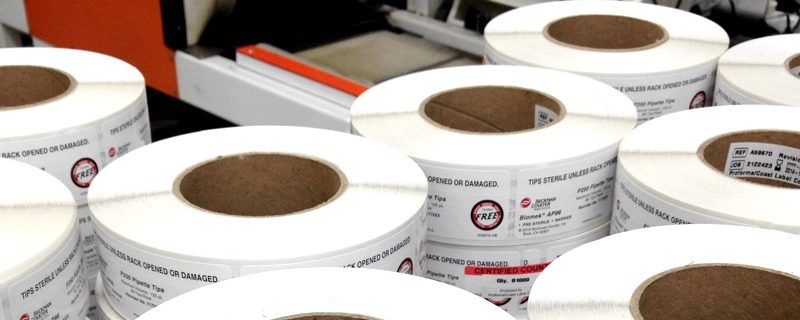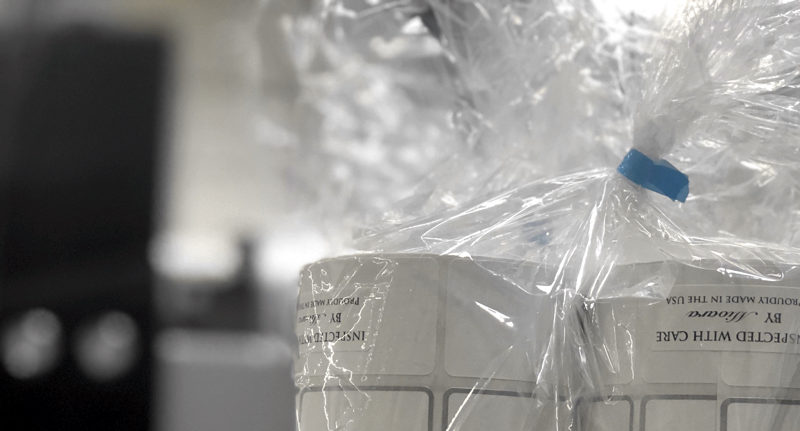From electronics and telecommunications to energy production and distribution, industries around the world rely on the IEC standards to create safe products. IEC standards are created to ensure safety for various aspects of electrotechnology, including electronics and electrical products. The IEC requirements cover labeling electrical safety, performance, and test methods, among other aspects. In this blog post, we’ll discuss the significance of IEC standards and why they matter for your business.
What is the IEC?
The International Electrotechnical Commission, or IEC, is an international non-profit organization that develops and publishes international standards for electrical, electronic, and related technologies. The goal of the IEC standards is to make sure electrical products are safe to use, efficient, and interoperable. The United States, the UK, and many EU member countries, among others, make up the organization. The IEC standards provide a common framework for industry and governments to ensure the quality and safety of products worldwide.
IEC Labeling Standards
One essential component of IEC standards is the labeling of electronic parts and products. The exact IEC labeling standards will depend on the specific IEC standard. For example, medical equipment may need to be labeled differently than lasers. Some of the general components of IEC labels include durability, legibility, and the use of standardized symbols. The IEC labeling standards help with the following:
- Global consistency: IEC standards provide a common language for labeling across borders. This global consistency ensures that products are identified and labeled consistently, regardless of the country of origin. This consistency benefits businesses and simplifies the understanding of product information for both consumers and regulatory authorities.
- Safety compliance: IEC standards are designed with safety in mind. When labeling products, adhering to IEC labeling standards helps communicate important information clearly. This can prevent accidents and injuries, as well as save lives.
- Regulatory requirements: Many countries have adopted IEC standards as a basis for their own regulatory requirements. Using IEC-compliant labels can help your business meet the legal and safety standards required by your local and international markets. Failure to comply can result in costly legal consequences and damage to your brand’s reputation.
- Customer trust: Customers often rely on labels to make informed decisions about the products they purchase. When you use IEC-compliant labels, you demonstrate your commitment to safety, quality, and transparency. This can enhance customer trust and confidence in your products, ultimately leading to increased sales and customer loyalty.
IEC 60601-1 Labeling Requirements
IEC 60601-1 is a series of standards that have to do with the safety and performance of medical equipment. Because labeling helps ensure the safe use of medical equipment, the label is considered a key component of the medical device. Here are some of the key IEC 60601-1 labeling requirements:
- The label must include essential information about the medical device, including its name, model, and serial number. The manufacturer’s name and address must also be clearly stated. Additionally, the device’s intended use and patient population or clinical conditions must be provided. Finally, electrical and safety symbols, as defined by IEC standards, must be included.
- Labels should be in the language(s) understood by the intended users, or the device may require multilingual labeling. Symbols used must conform to ISO 15223-1.
- Labels should be durable and able to withstand the environmental conditions and cleaning procedures the medical device will be exposed to.
- If the device comes with accessories, the label should specify the accessories’ compatibility and intended use.
- The label may need to include the manufacturing or expiration dates, depending on the type of device.
- The label should refer the user to the device’s user manual or instructions. These instructions should include information on device setup, operation, maintenance, and safety precautions.
- The label may need to indicate any essential performance characteristics, as defined by the specific IEC 60601 labeling requirements applicable to the device.
IEC 60417 Labels
IEC 60417 is a standard for graphical symbols that are used in electrotechnical documentation. The standard provides a thorough set of standardized symbols, making it easier for professionals in the electrical and electronics industry to communicate and understand various components and aspects of electrical systems. IEC 60417 labels are used on equipment to provide important information, such as warning of a hot surface or indicating a connection point.
IEC 60825-1 Label Requirements
IEC 60825-1 provides guidelines for the safe use of lasers. One of the key aspects of IEC 60825-1 is the labeling of laser products to provide information about potential hazards and safety precautions that should be taken. Some of the specific IEC 60825-1 label requirements include:
- Laser classification label: Laser products are classified into different classes, based on their potential danger. The label should prominently display the laser product’s classification, such as Class 1, Class 2, Class 3R, Class 3B, or Class 4.
- Warning labels: The label should include appropriate warning symbols and text to inform users about potential hazards, such as “Avoid Eye or Skin Exposure to Direct or Scattered Radiation.”
- Nominal hazard zone (NHZ): The label should specify the NHZ, which is the area where the laser radiation exceeds the maximum permissible exposure levels.
- Manufacturer’s information: The label should include information about the manufacturer or supplier of the laser product, including their name and contact details.
- Operating instructions: Important operating instructions, such as how to power on and off the laser, should be provided on the label.
- Class 3B and Class 4 labels: for Class 3B and Class 4 lasers, additional safety information and precautions are required, including details about laser safety interlocks, laser emission indicator, and the need for laser protective eyewear.
- Cautions and warnings: The label should include cautions and warnings related to the laser’s safe use, maintenance, and any specific precautions users need to take.
IEC Warning Labels
IEC warning labels are used to convey safety information and provide warnings about potential hazards associated with electrical and electronic equipment. These warning labels use a mixture of standardized symbols and text. Here are some common IEC warning labels:
- General warning label: This label consists of an exclamation mark symbol within a triangular border. It is a general warning sign used to indicate a potential hazard that doesn’t fall into other categories.
- High voltage warning label: This label features a lightning bolt symbol inside a triangular border and indicates the presence of high voltage. It is commonly used on electrical panels, substations, and equipment with high voltage.
- Electric shock warning label: This label features a symbol of a person being electrocuted, typically in red, within a triangular border. It warns of the risk of electric shock.
- Explosion hazard warning label: The explosion hazard warning label features an explosion symbol inside a triangular border. It indicates the presence of explosive materials or conditions, such as environments where flammable gasses or materials are present.
- Hazardous voltage label: This label includes the text “Hazardous Voltage” and often features a lightning bolt symbol. It warns of the presence of dangerous voltage levels.
- Laser radiation warning label: Laser radiation warning labels are used to indicate the presence of lasers and potential eye or skin hazards. They include a laser symbol and relevant warnings about laser safety.
- Hot surface warning levels: This label features a depiction of a hot surface, often with waves or lines to indicate heat. It warns that the surface can become hot and cause burns.
- Arc flash warning label: Arc flash labels are used to warn of potential arc flash hazards in electrical equipment. They include information about the level of protection required, the incident energy, and the necessary PPE.
ANSI vs IEC
The American National Standards Institute, or ANSI, and the IEC are two different organizations that establish standards for various industries. ANSI is primarily focused on developing standards for the US, while the IEC standards are developed for global use. While the US doesn’t formally recognize the IEC, they do recognize ANSI, which often relies on IEC standards to create their own.
Another major difference you’ll see between these two organizations is in the type of standards created. While ANSI does develop electrotechnical standards, it also covers a wide range of other industries and sectors. On the other hand, the IEC focuses on standards related to electrical and electronic equipment.
IEC Standard Examples
The IEC has developed a wide range of standards that cover many aspects of electrical and electronic technology. Here are some examples of IEC standards from different categories:
- IEC 60950-1: Information Technology Equipment–Safety
- IEC 60068: Environmental Testing
- IEC 60335-1: Safety of Household and Similar Electrical Appliances
- IEC 61000: Electromagnetic Compatibility
- IEC 61850: Communication Networks and Systems for Power Utility Automation
- IEC 62305: Protection Against Lightning
- IEC 61508: Functional Safety of Electrical/Electronic/Programmable Electronic Safety-Related Systems
- IEC 60417: Graphical Symbols for Use on Equipment
- IEC 60065: Audio, Video, and Similar Electronic Apparatus–Safety Requirements
- IEC 61883: Consumer Audio/Video Equipment–Digital Interface
- IEC 60204: Safety of Machinery–Electrical Equipment of Machines
- IEC 61511: Functional Safety–Safety Instrumented Systems for the Process Industry Sector
These are just a few examples of IEC standards. There are many more that cover a wide range of related fields. You can purchase the specific standard(s) you need for your organization from the IEC website. With that information downloaded, you’ll be able to use the IEC standards to ensure the safety, reliability, and compatibility of your products.
Is IEC Compliance Mandatory?
No, IEC compliance is not mandatory. The IEC itself does not have the authority to make IEC compliance mandatory. However, many countries have adopted the IEC requirements into law. Additionally, because these standards are accepted globally, it’s usually beneficial to remain IEC compliant–for both importers and manufacturers.
IEC vs UL
Underwriters Laboratories, or UL, and the IEC are two prominent organizations that provide standards related to electrical and electronic products. UL is a safety certification organization that is primarily focused on product safety, performance, and reliability. While UL certification is mostly relevant to companies selling in North America, IEC standards are recognized and used internationally. In fact, UL relies on certain IEC standards in many of their own certifications.
Another difference between the two is that UL provides certifications, while the IEC does not. Both organizations, however, play essential roles in ensuring the safety, performance, and quality of electrical and electronic products.
IEC vs EN
The European Norm, or EN, and the IEC are two different standards organizations that provide standards for various industries. While the IEC is an international organization, the EN provides standards specific to the EU and other European countries. The EN typically adopts portions of the IEC standard for compliance within the European market.
Another big difference between the two organizations is that the IEC provides no certification, but EN standards are used as the basis for CE marking, which is required for many products sold within the EU. Essentially, if you’re looking to get into the European market, you need to comply with EN standards to receive your CE mark.
IEC Standard Labels with Coast Label
As a custom labeling manufacturer, we have the expertise and training to ensure that your labels are IEC compliant. We work closely with our clients to design custom labels that not only meet IEC standards but also align with your brand identity. We’ll help you select the appropriate materials and adhesives required so that your IEC labels are legible and durable enough for industrial conditions.
The Code 128 and GS1-128 Guide



